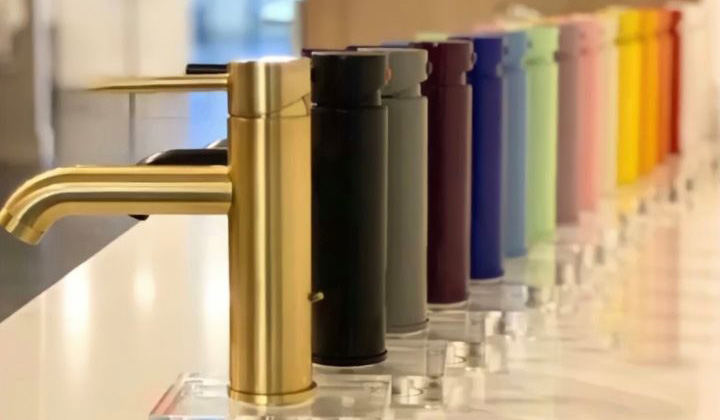What Is The Best Flooring For A Kitchen
Choosing the right flooring for your kitchen is more than just a design decision, it’s about balancing functionality, durability, and style in one of the busiest spaces in your home. With so many options available, from classic hardwood to versatile vinyl, finding the best fit can feel overwhelming. This guide breaks down the essential factors to consider and compares popular materials so you can confidently select flooring that suits your kitchen’s unique needs and your lifestyle.
Key Considerations When Choosing Kitchen Flooring
Durability And Wear Resistance
Your kitchen floor takes a beating daily, between dropped utensils, heavy foot traffic, and moving chairs, durability is paramount. Look for flooring materials that resist scratches, dents, and general wear. For instance, ceramic tiles and luxury vinyl offer excellent resilience against scratches and scuffs compared to softer surfaces.
Water Resistance And Maintenance
Kitchens are prone to spills and moisture, so flooring that stands up to water is crucial. Waterproof or water-resistant options like porcelain tile and vinyl are easier to maintain and less likely to warp or stain. Choosing flooring that requires simple cleaning routines also reduces effort and keeps your kitchen hygienic.
Comfort And Safety
Standing for long periods while cooking means comfort matters. Softer surfaces like vinyl or bamboo provide some cushioning, reducing fatigue. Also, safety features such as slip resistance help prevent accidents, especially in homes with children or elderly family members.
Aesthetic Appeal And Style
Your kitchen flooring should complement your overall design vision. From rustic charm in hardwood to modern sleekness with tiles, options vary widely. Consider the color, texture, and finish to enhance your kitchen’s ambiance without sacrificing practicality.
Popular Kitchen Flooring Options
Ceramic And Porcelain Tile
Popular for their durability and water resistance, ceramic and porcelain tiles come in many styles and finishes. They’re ideal for spills and heavy use but can be cold and hard underfoot.
Hardwood Flooring
Hardwood offers timeless beauty with natural warmth and character. It’s durable but prone to water damage, so it requires prompt cleaning of spills and proper sealing.
Luxury Vinyl Flooring
Luxury vinyl combines waterproof properties with soft comfort and a wide range of looks mimicking wood or stone. It’s an excellent budget-friendly, low-maintenance choice.
Laminate Flooring
Laminate is cost-effective and easy to install, with visuals that replicate wood or tile. While water-resistant varieties exist, laminates generally can’t handle standing water as well as vinyl.
Natural Stone Flooring
Stone like slate or travertine adds elegance and durability but often comes with higher costs and requires periodic sealing to prevent stains.
Bamboo Flooring
Bamboo is eco-friendly and harder than many hardwoods. It offers a unique look but may be susceptible to moisture unless well-treated and maintained.
Comparing Costs And Installation Process
Budget Considerations For Kitchen Flooring
Your budget will significantly influence flooring choices. Vinyl and laminate flooring are generally the most affordable upfront, while hardwood and natural stone can be a greater investment. Remember to factor in long-term maintenance costs too.
Installation Complexity And Time
DIY installation is possible with laminate and vinyl compared to tile or stone, which often require professional expertise. Hardwood installation varies by type but generally takes more time due to preparation and finishing. Timeframes affect both cost and convenience, so choose according to your schedule and skill level.
Pros And Cons Of Each Flooring Type
Ceramic And Porcelain Tile Advantages And Drawbacks
Pros: Highly durable, water-resistant, easy to clean, extensive style options.
Cons: Hard and cold surface, grout can stain or crack, installation can be costly.
Hardwood Flooring Benefits And Limitations
Pros: Classic aesthetic, adds home value, comfortable underfoot.
Cons: Sensitive to moisture, requires sealing and regular maintenance, prone to scratches.
Vinyl And Laminate Flooring Pros And Cons
Pros: Budget-friendly, easy installation, water-resistant (especially vinyl), variety of designs.
Cons: Laminate less water-resistant, can appear less natural, lower resale value compared to hardwood.
Natural Stone And Bamboo Flooring Insights
Natural Stone: Durable, elegant, but high cost and maintenance requirements.
Bamboo: Sustainable, harder than many woods, but sensitive to water without proper treatment.
Tips For Maintaining Kitchen Flooring
Routine Cleaning Practices
Regular sweeping or vacuuming prevents dirt from scratching the surface, while damp mopping with appropriate cleaners keeps floors spotless. Avoid harsh chemicals that may damage finishes.
Preventing Damage And Extending Longevity
Use area rugs or mats in high-traffic zones and near sinks to absorb spills and reduce wear. Quickly wipe up any liquids and avoid dragging heavy furniture. Periodic sealing (for stone or hardwood) enhances water resistance and preserves appearance.
Conclusion
Deciding on the best kitchen flooring comes down to balancing your lifestyle needs with aesthetic preferences and budget. If you want durability and water resistance with a polished look, ceramic or porcelain tile might be your go-to. For warmth and timeless beauty, hardwood remains a favorite, though it demands more care. Luxury vinyl offers a modern, practical alternative combining ease and comfort, while options like bamboo or natural stone cater to niche tastes with unique benefits. By weighing these factors carefully and staying mindful of maintenance, you’ll select flooring that stands up to your kitchen’s demands and keeps your space looking great for years to come.

